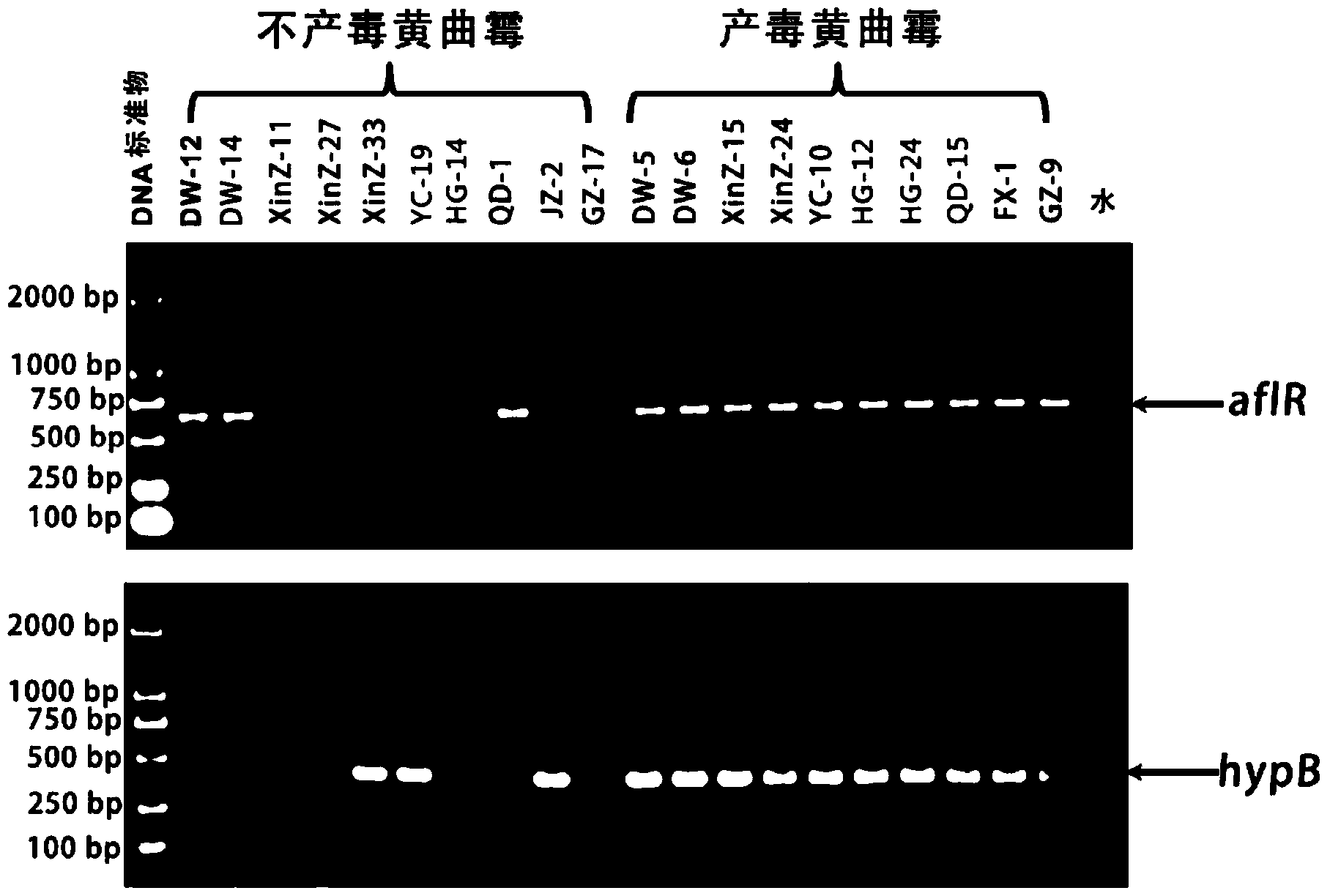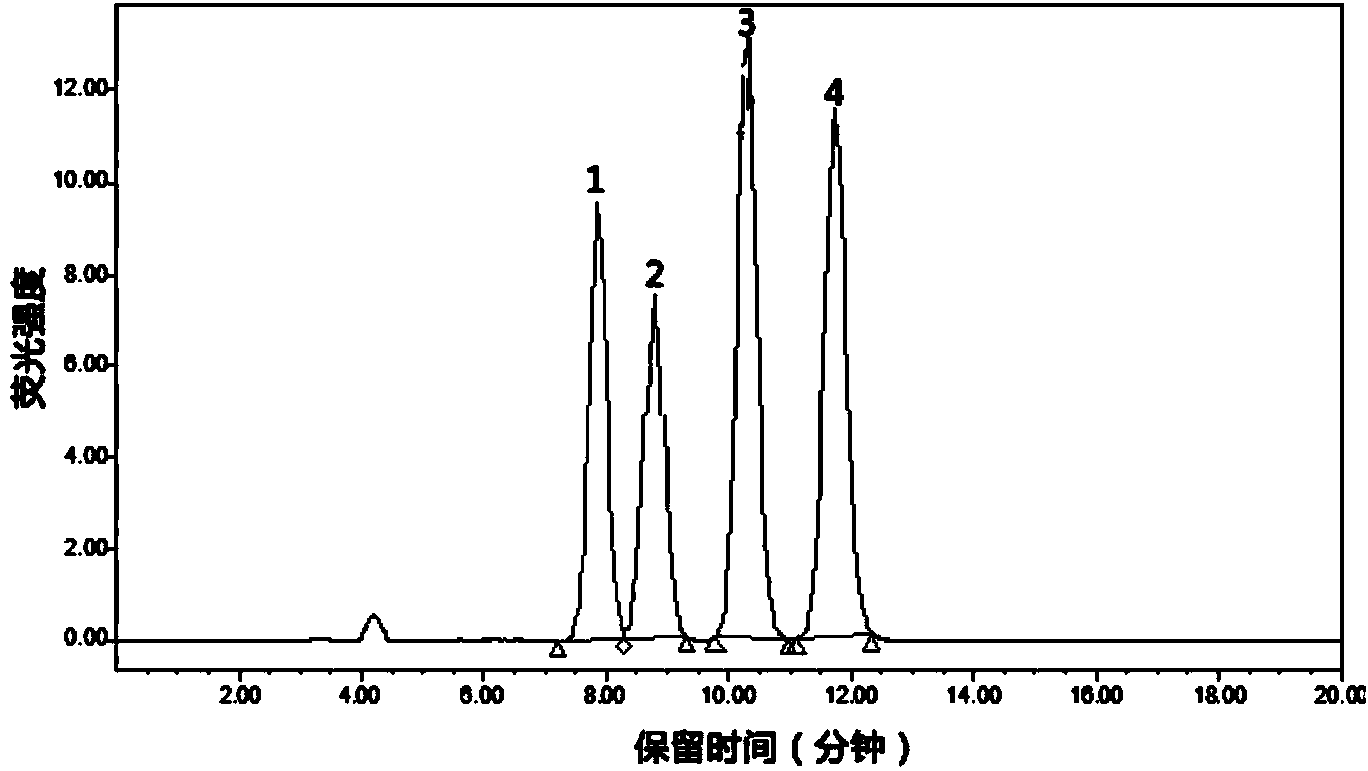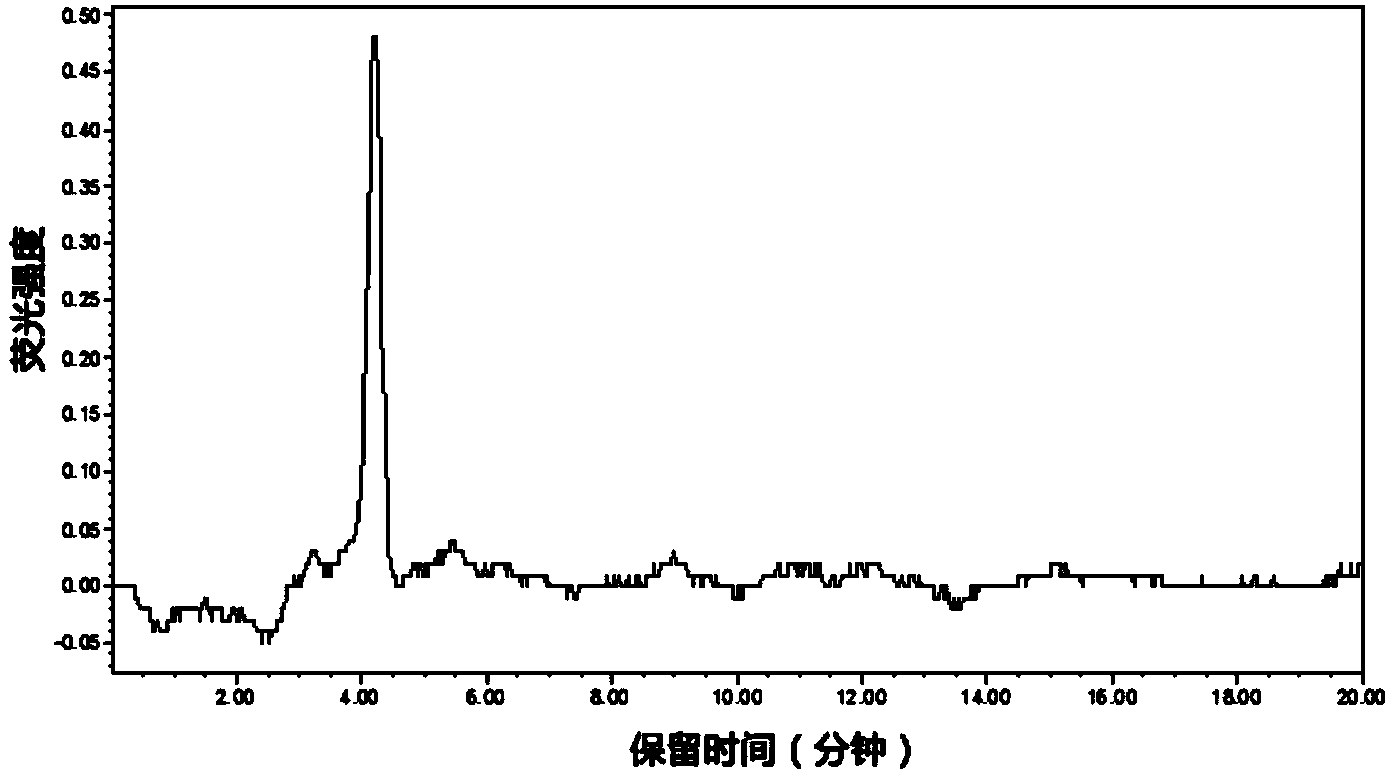Primer for identifying whether aspergillus flavus strain produces aflatoxin or not and application thereof
A technology of Aspergillus flavus strain and aflatoxin, applied in the biological field, can solve problems such as time-consuming and labor-intensive, and achieve the effects of high reliability, high speed and high specificity
- Summary
- Abstract
- Description
- Claims
- Application Information
AI Technical Summary
Problems solved by technology
Method used
Image
Examples
Embodiment 1
[0036] Example 1. Design and synthesis of primers for identifying whether Aspergillus flavus strains produce aflatoxin
[0037] According to the sequences of the toxin synthesis genes aflR and hypB, two sets of PCR primers were designed, namely aflR-F / aflR-R and hypB-F / hypB-R. The details are shown in Table 1. The primers were synthesized by Shanghai Sangong, and can also be synthesized by conventional primer synthesis methods.
[0038] Table 1 Primer sequences of different toxin synthesis genes
[0039]
Embodiment 2
[0040] Embodiment 2, the identification of whether the Aspergillus flavus strain produces toxin
[0041] Tested strains: Aspergillus flavus strains DW-12, DW-14, XinZ-11, XinZ-27, XinZ-33, YC-19, HG-14, QD-1, JZ-2, GZ- 17, and DW-5, DW-6, XinZ-15, XinZ-24, YC-10, HG-12, HG-24, QD-15, FX-1, GZ-9.
[0042] 1. Strain DNA Extraction
[0043] Use an inoculation needle to scrape 0.2 g of mycelium from the PDA plate, put it into a centrifuge tube, pour liquid nitrogen, and then put it in a high-speed tissue grinder to grind the mycelium into powder. Transfer the ground mycelium powder to a 2mL centrifuge tube, add 750μL of extraction solution (recipe: solvent is water, solute and its concentration: 100mmol / L Tris-HCl, 150mmol / L EDTA, pH 8.0), 50 Stand at ℃ for 2 minutes, then add 150 μL of 10% (10g / 100ml) SDS aqueous solution, mix well, add 450 μL of benzyl chloride, shake the centrifuge tube vigorously to make the mixture in the tube milky. Place in a water bath at 50°C for 1 hou...
PUM
 Login to view more
Login to view more Abstract
Description
Claims
Application Information
 Login to view more
Login to view more - R&D Engineer
- R&D Manager
- IP Professional
- Industry Leading Data Capabilities
- Powerful AI technology
- Patent DNA Extraction
Browse by: Latest US Patents, China's latest patents, Technical Efficacy Thesaurus, Application Domain, Technology Topic.
© 2024 PatSnap. All rights reserved.Legal|Privacy policy|Modern Slavery Act Transparency Statement|Sitemap



